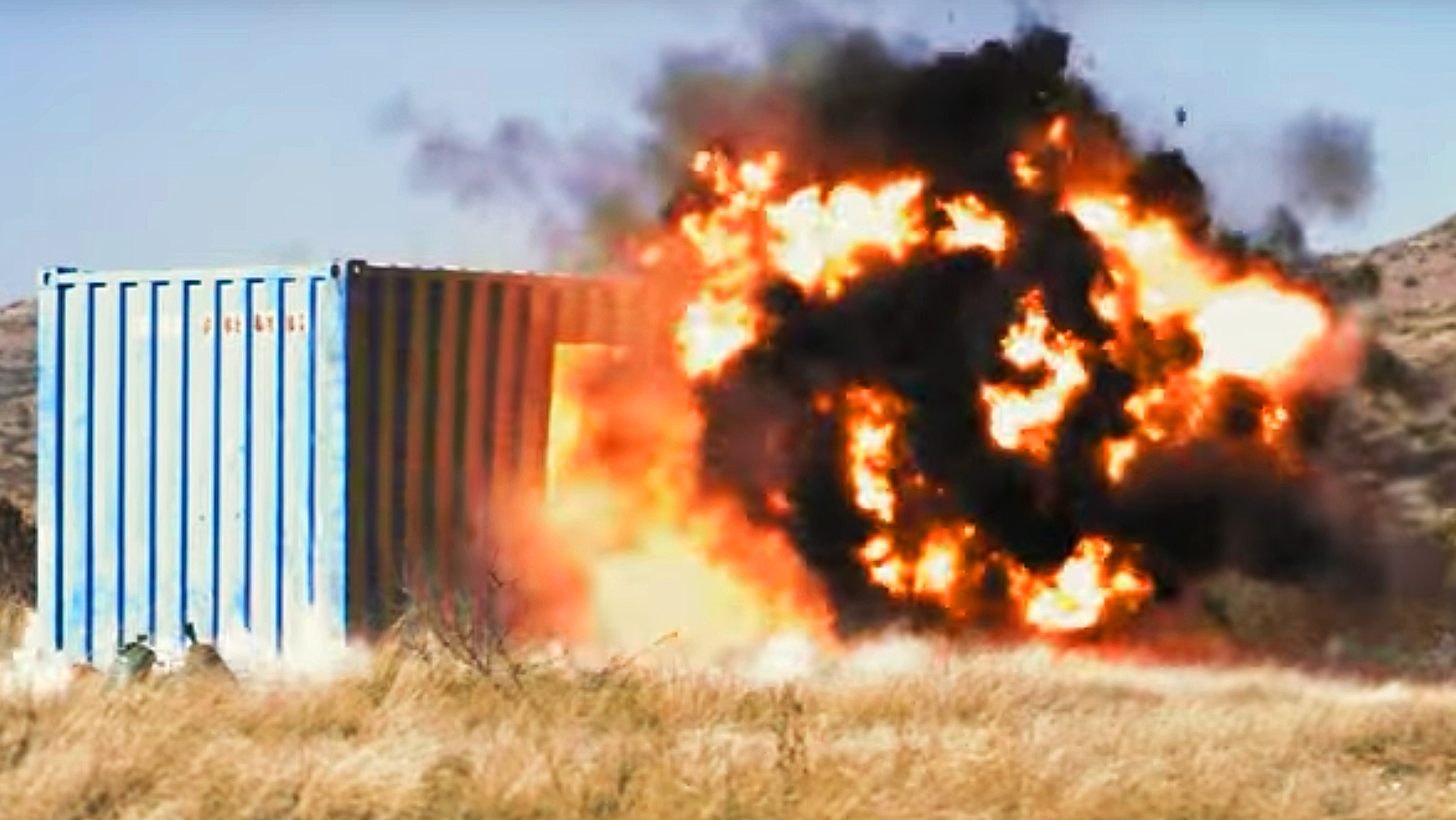While the ALTIUS-600 series of drones has become increasingly popular within the U.S. military in recent years, at least for testing, as well as being delivered to Ukraine, we now have the chance to witness the drone’s warhead-armed variant in explosive action. Known as the ALTIUS-600M, this purpose-built loitering munition derivative of the drone was formally announced last year.

The video in question was uploaded by Anduril Industries, the company that is now responsible for the ALTIUS-600 series, having taken ownership of Area-I, the firm that originally developed the drone. The ALTIUS-600M is seen scoring a direct hit on a container target on a range, resulting in an impressive fireball. The type of warhead fitted, and its mass, is not disclosed, although the basic drone has an overall weight of between 20-27 pounds, depending on its payload, which typically weighs between three and seven pounds.
It’s also not clear from what platform the loitering munition was launched, but the video also includes sequences showing examples of the drone deployed by an MRZR all-terrain vehicle, by a UH-60 Black Hawk helicopter, from a ground launcher.

The video also includes a portion showing how ALTIUS-600s can be operated together as a networked swarm. This is something that the U.S. Army has been testing and such a swarm could also consist of drones in multiple configurations, allowing the group to cooperatively perform various tasks to accomplish an overall set of mission objectives. This is particularly significant given the number of different payloads the drones can carry, including surveillance, electronic warfare, signals intelligence, communications relay, and cyber warfare. And, of course, there’s the warhead-toting ALTIUS-600M, which brings the ability to execute kinetic engagements as part of the collaborative swarm, including striking targets that other ALTIUS-600s detect.
As far as networked swarms, the U.S. Army last year launched four waves of seven ALTIU-600 drones in what was the largest networked sortie of Air-Launched Effects (ALE) unmanned aerial vehicles of its kind up to that point. A single operator controlled the swarm of drones as they hunted for and destroyed simulated enemy positions ahead. You can read The War Zone’s full analysis of that groundbreaking trial here and here.
In the new video, the networked ALTIUS drones are also shown working alongside U.S. Army AH-64 Apache attack helicopters, an asset that is increasingly being used together with uncrewed systems as part of the Manned-Unmanned Teaming-Extended (MUMT-X) initiative, that you can read more about here.
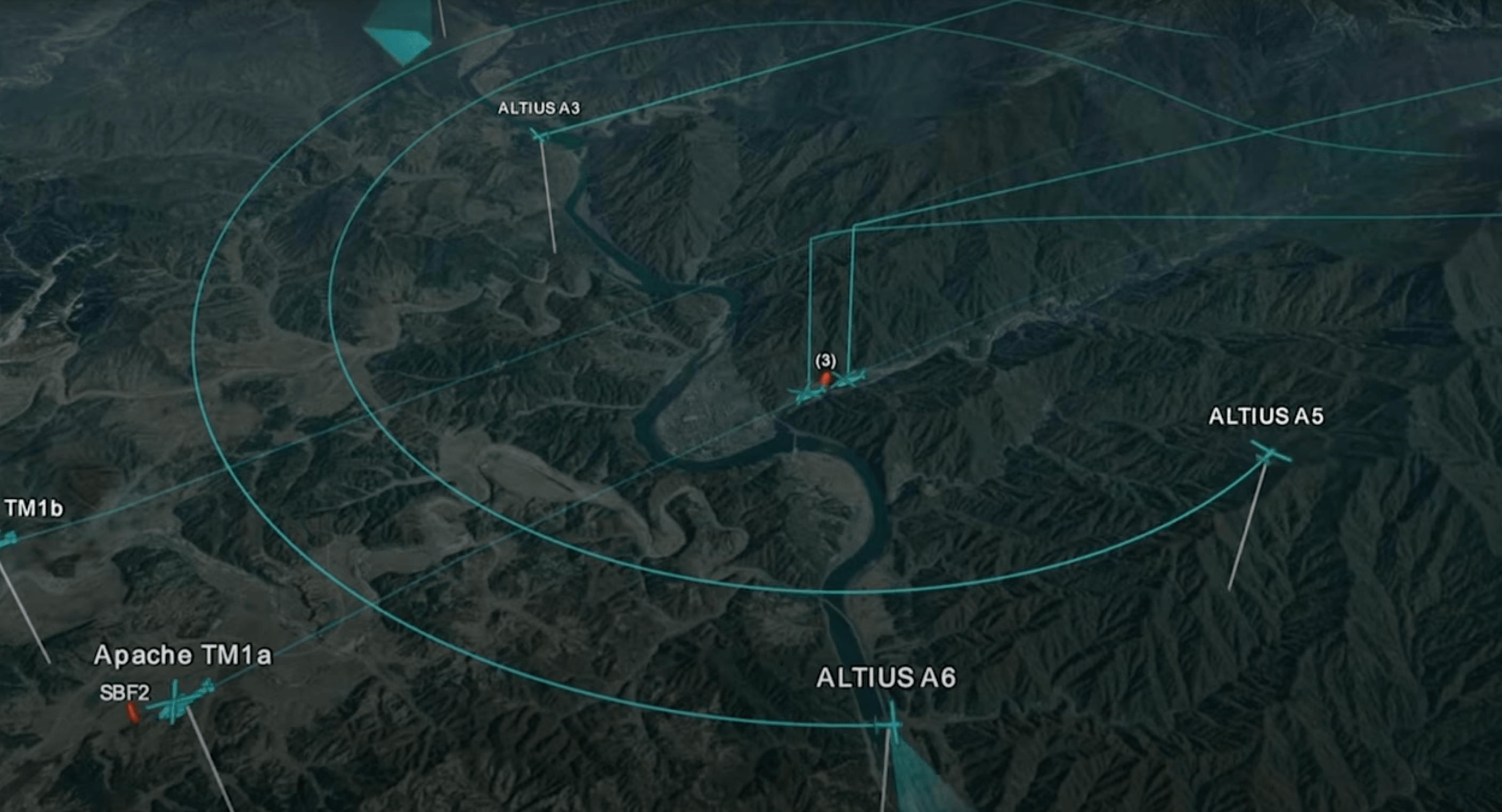
According to Anduril, the ALTIUS-600M loitering munition offers “multi-domain launch capability from air, land, and sea [and] extends the reach and survivability of manned assets in deployed environments.” The company claims that the ALTIUS-600M “delivers twice the loitering time and range of current market offerings and leverages autonomy to enable a single operator to control multiple assets simultaneously.”
The starting point for this loitering munition is the original tube-launched ALTIUS-600 drone developed by Area-I, which we have discussed in depth in the past.

According to Area-I’s website, the ALTIUS-600 has a maximum range of 276 miles and can remain airborne for at least four hours. And, apart from the ALTIUS-600M, which is designed for a one-way mission, the other (unarmed) variants of the ALTIUS-600 are designed to be recoverable and reusable.

Much of the drone’s popularity rests on the ease with which it can be adapted for different launch platforms. As well as being air-launched via a Common Launch Tube (CLT), it is also compatible with various types of launchers on the ground or even at sea. As well as the aforementioned UH-60, the ALTIUS-600 has also been launched in the past from C-130, AC-130J, P-3, and civilian aircraft. Other drones, too, have been used to launch the ALTIUS-600 in trials, namely the U.S. Air Force’s stealthy XQ-58A Valkyrie combat drone, which released examples from its internal weapons bay, back in 2021.
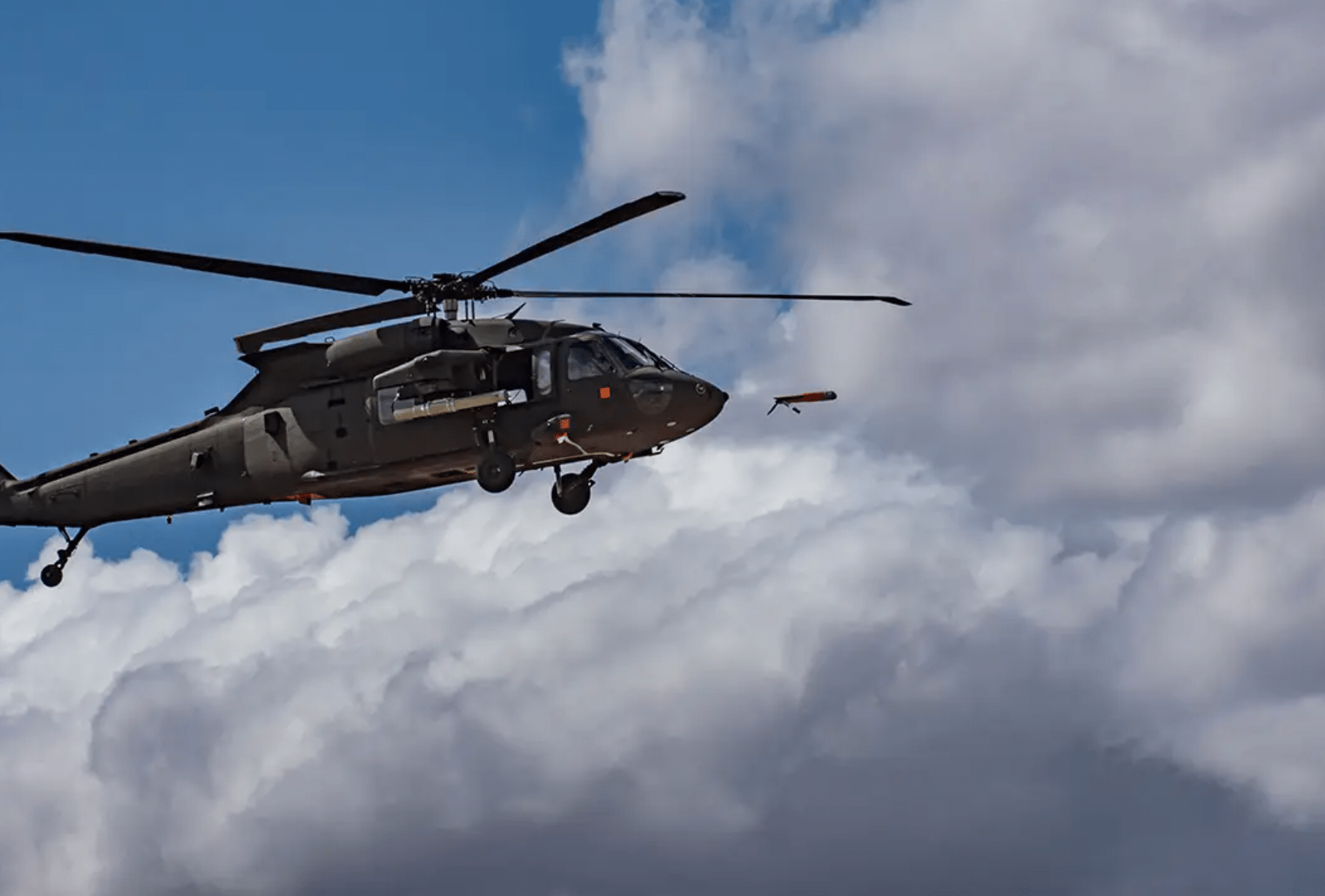
With loitering munitions, in general, becoming a more familiar feature of the modern battlefield, there’s every chance that the ALTIUS-600M will continue the success recorded by the other, non-lethal members of the family.
It’s easy to imagine how a loitering munition like the ALTIUS-600M would be of interest in a wide range of scenarios, although the U.S. Army, U.S. Marine Corps, and U.S. Special Operations Command (SOCOM) are all increasingly interested in the capabilities offered by weapons of this type.
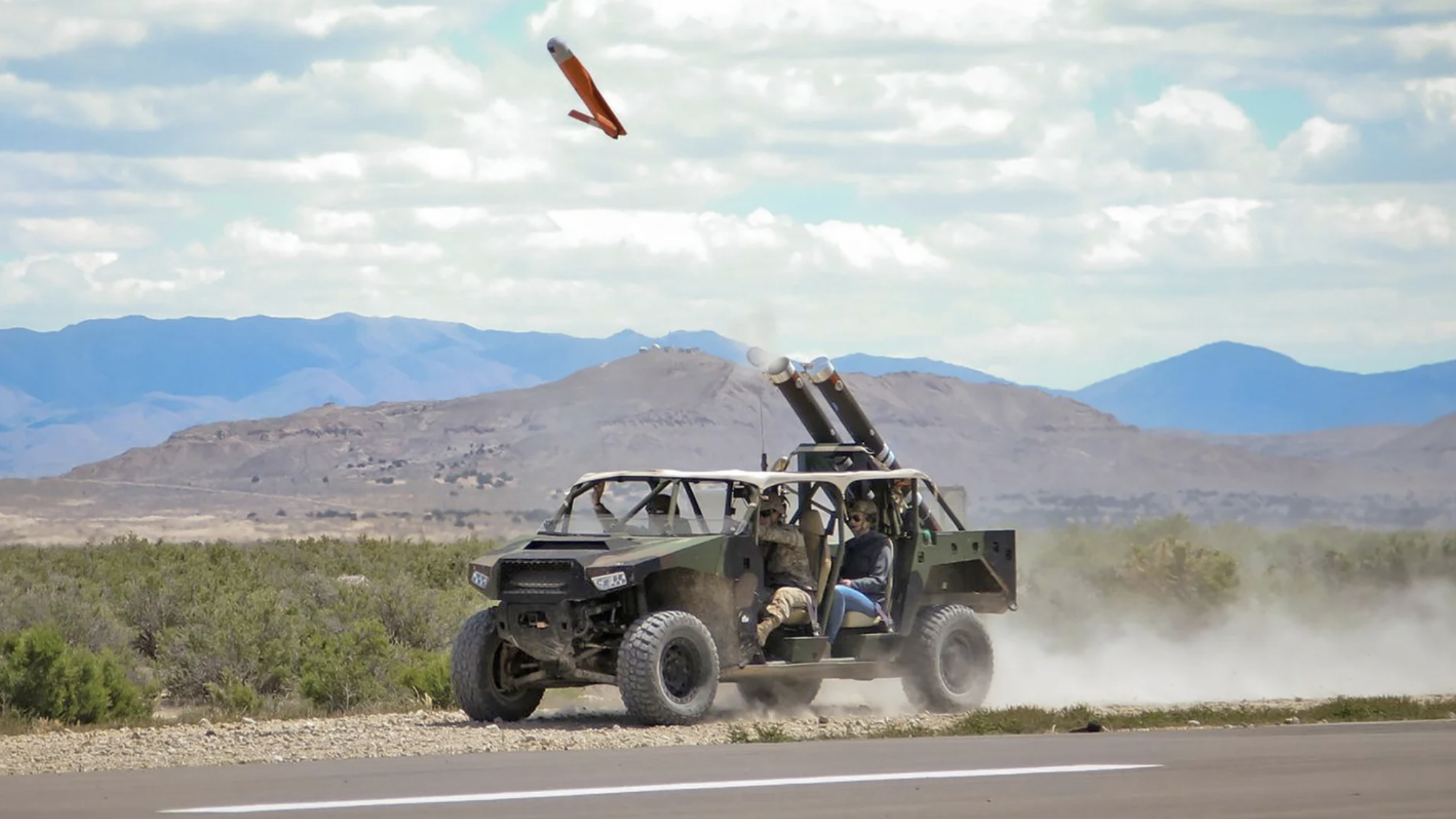
Above all, the ability for a small team of infantry to deploy modular drones that can be utilized for intelligence-gathering as well as precision attack, among other roles, seems especially compelling. And since loitering munitions can provide an effect disproportionate to their size, even a small team would be able to engage even heavier armored vehicles, at standoff distances. The same can be said about taking out air defenses over long distances.
The Army’s aforementioned Air Launched Effects initiative is a key component of ensuring the survivability of its rotary-wing fleet over a modern battlefield, especially when it comes to opening up holes in an enemy’s air defense system. This is a job ALTIUS-600 is clearly capable of, especially for scouting ahead, stand-in jamming, and attacking air defenses and other targets far beyond traditional helicopter weaponry range.
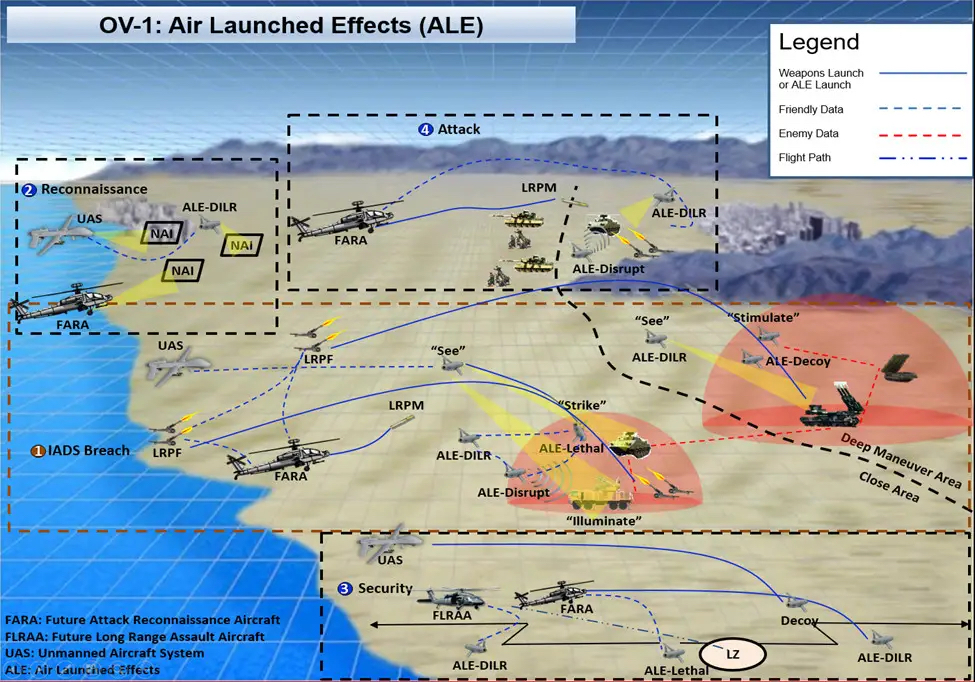
Anduril also has a larger loitering munition, the ALTIUS-700M, which follows the same basic form and concept as the ALTIUS-600M, but which is considerably larger, weighing up to 65 pounds of which the warhead can comprise as much as 35 pounds. With a range of 310 miles, this kind of drone would open up the possibility of attacking a much wider range of targets, including larger and better-armored ones, at greater distances.
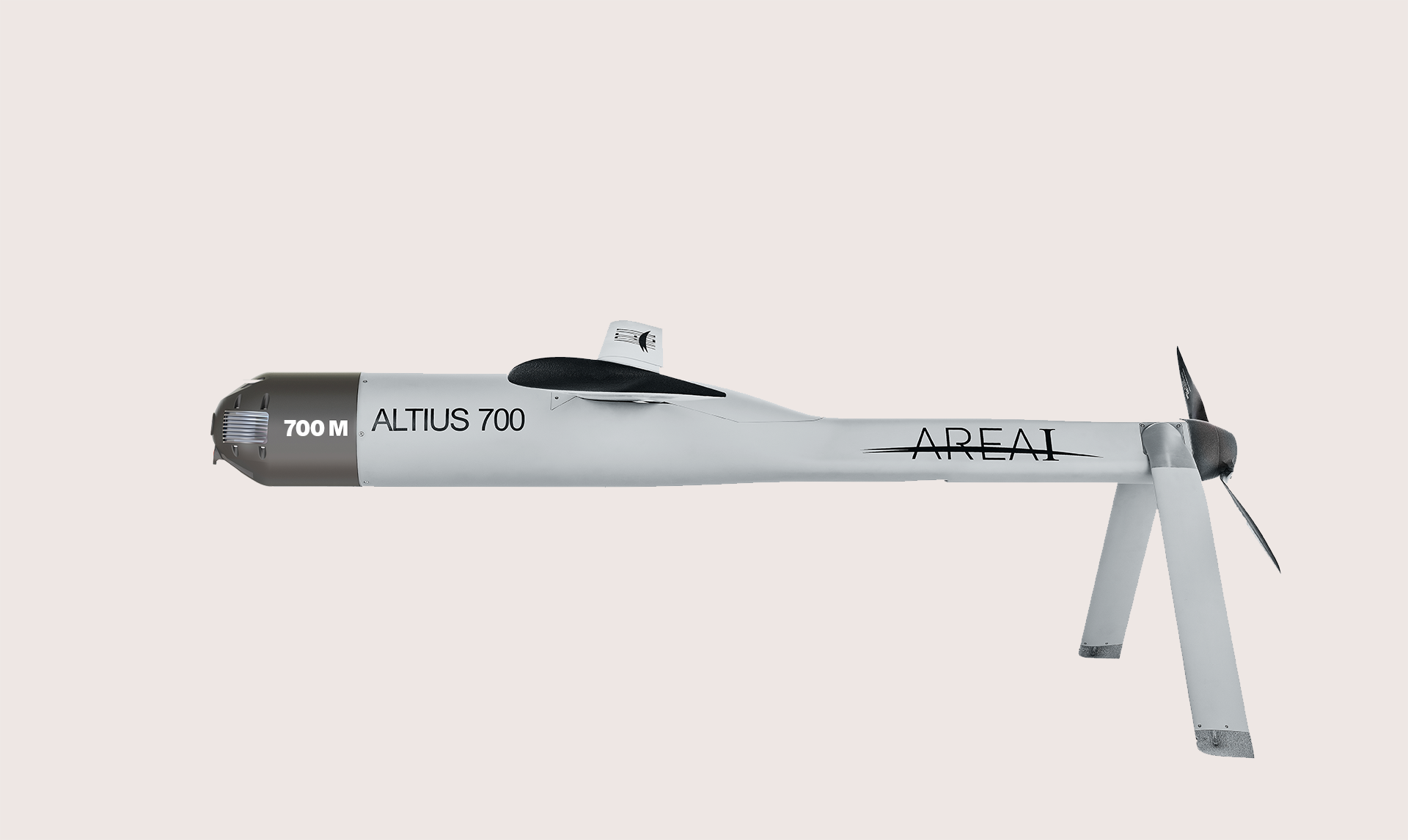
The fact that ALTIUS-600 is already at work on the battlefield in Ukraine will help refine and justify its capabilities. But just the fact that there is a relatively proven and available U.S.-made loitering munition with nearly a 300-mile range means we are likely to see far more of ALTIUS-600M in the future.
Contact the author: thomas@thedrive.com
